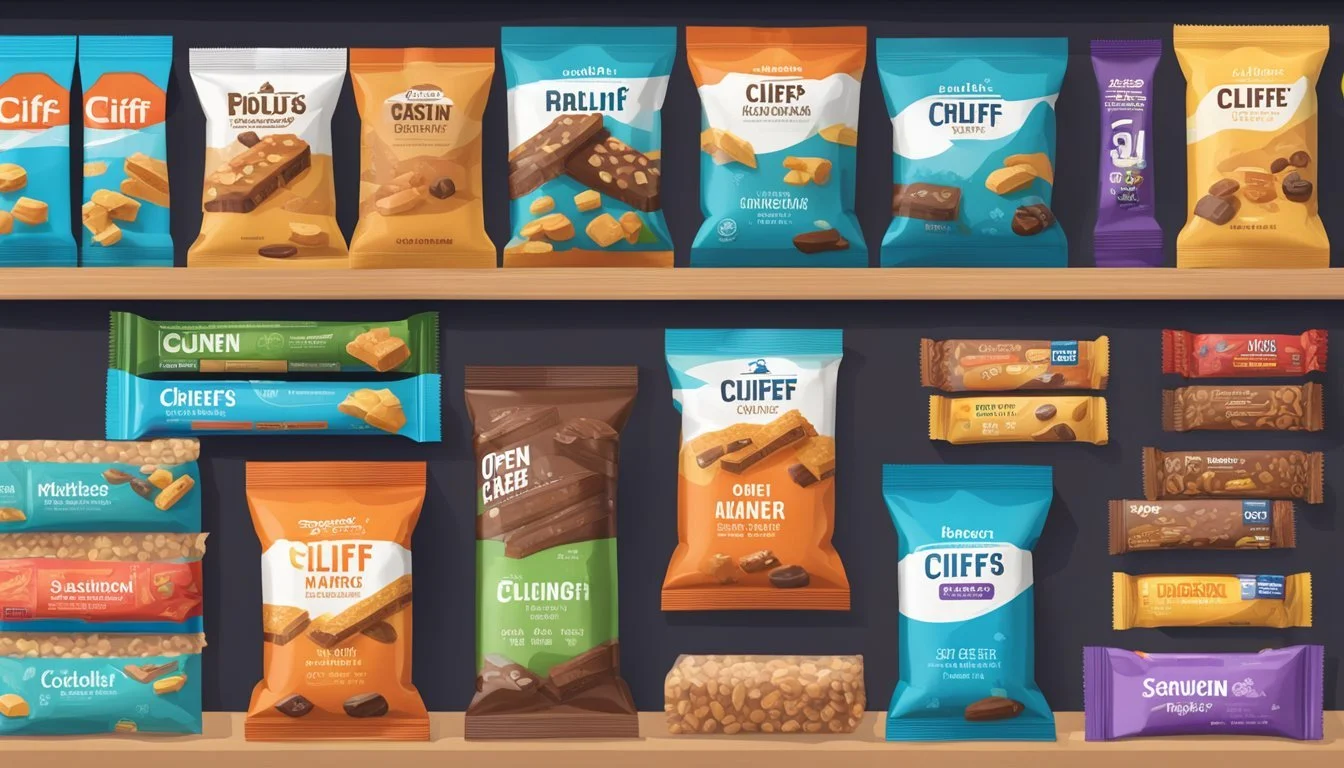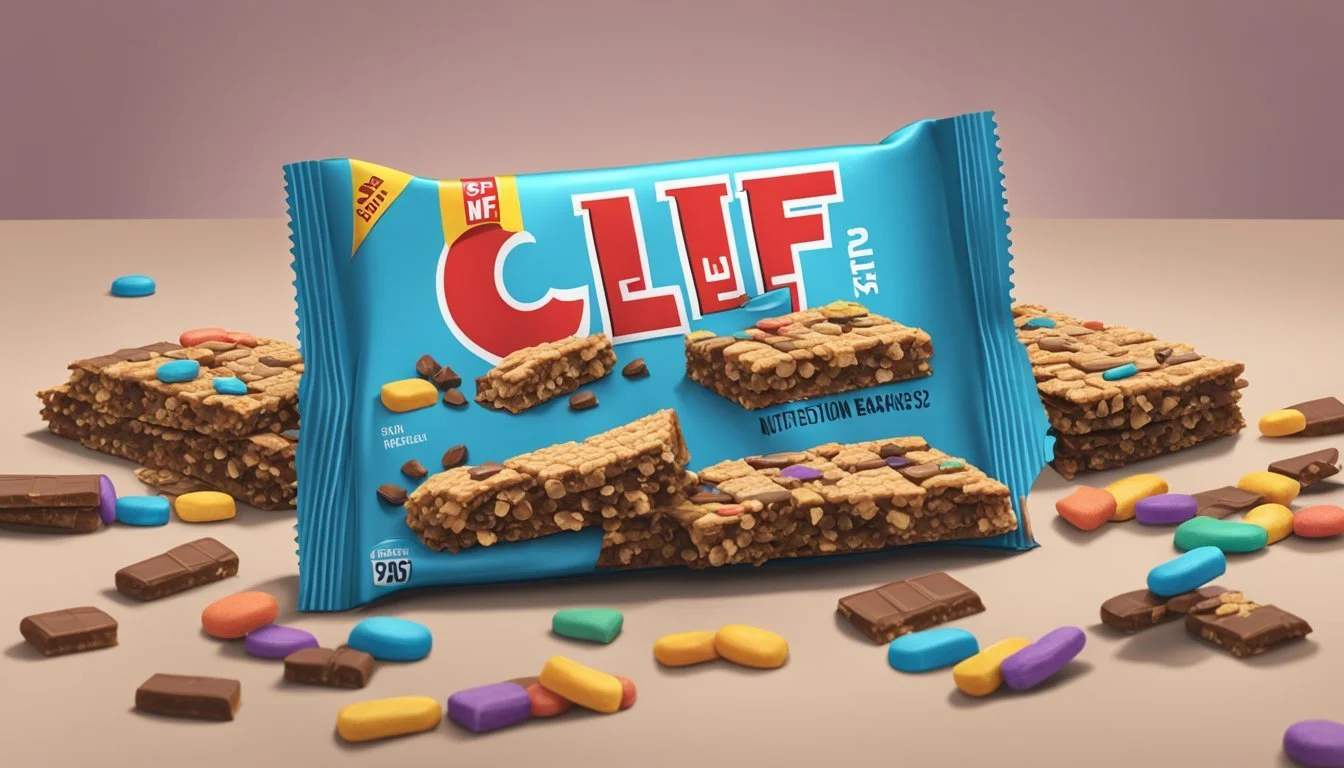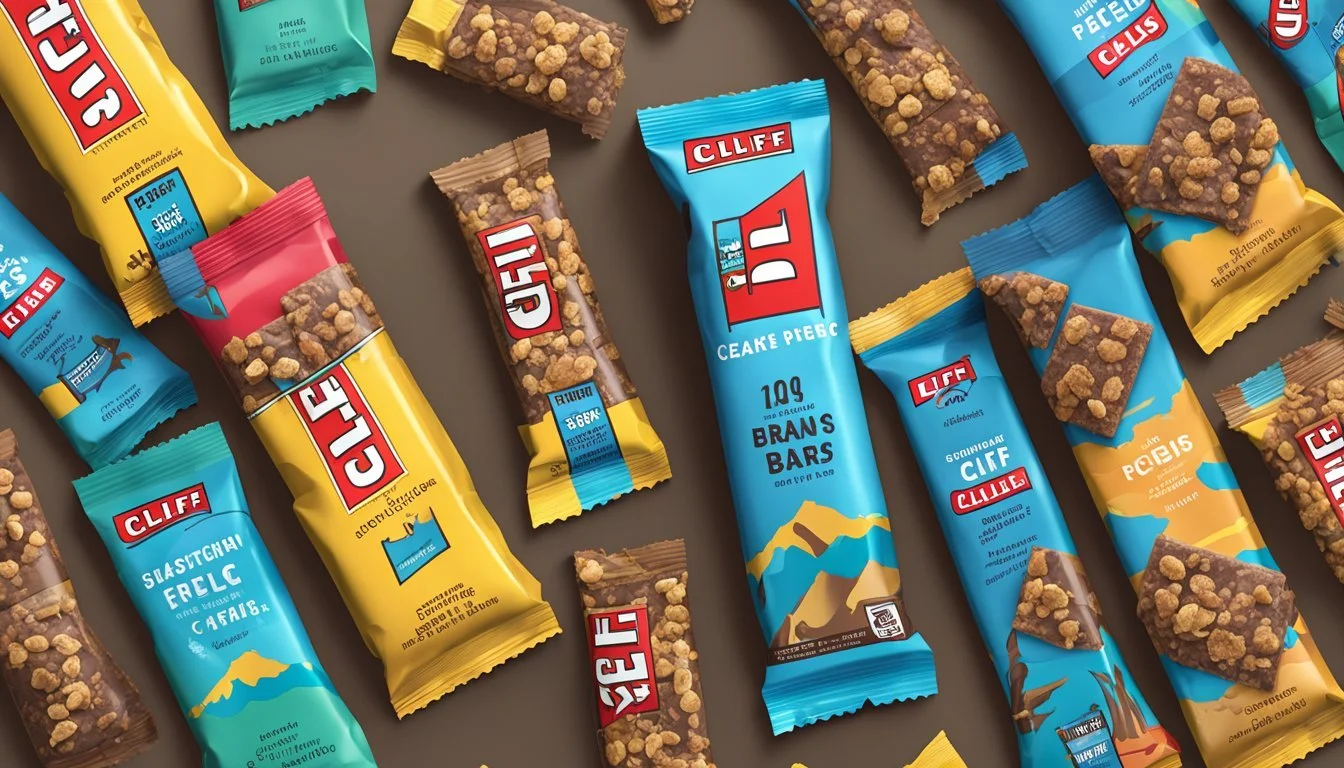How Many Clif Bars Per Day Is Too Much?
Understanding Safe Consumption Limits
Determining the appropriate quantity of Clif Bars to consume daily involves considering various dietary factors, such as calorie intake, nutritional balance, and individual energy needs. Clif Bars, known for their convenience and energy-boosting properties, are packed with carbohydrates, proteins, and fats. Typically, a single Clif Bar contains around 250 calories with varying amounts of fat, carbohydrates, and protein, depending on the flavor. While they can be a practical snack for active individuals needing a quick source of energy, they are also relatively high in sugars and calories.
The consumption of Clif Bars should align with one's overall dietary goals and physical activity levels. Eating multiple bars could lead to an excessive intake of calories, potentially resulting in weight gain if these calories are not utilized through activity. Moreover, while Clif Bars do provide a substantial amount of protein, which is beneficial for muscle repair and recovery, they should not be relied upon as the sole source of nutrition.
For most individuals, Clif Bars should be viewed as a supplemental source of energy rather than a primary food item. They can be effectively integrated into an active lifestyle or consumed as a convenient snack on the go. However, it is vitally important to balance their intake with whole foods rich in nutrients to ensure a well-rounded diet and maintain overall health. A dietitian or nutrition expert can offer personalized guidance on the optimal number of Clif Bars to fit into one's daily dietary regimen.
Understanding Clif Bars
Clif Bars are designed as energy bars that serve as a convenient snack or meal replacement, especially for active individuals. They contain a blend of carbohydrates, proteins, and fats intended to provide a quick boost of energy and sustain activity levels. Typically, Clif Bars incorporate whole grains, nuts, and sometimes organic ingredients, positioning themselves as a healthier snack option.
Nutritionally, a standard Clif Bar contains around 230-260 calories and approximately 7 grams of protein. The fat content in these bars can vary, leaning towards healthy fats in certain varieties. For example, some Clif Bars use organic peanut butter as a key ingredient for its healthful fats.
Carbohydrates:
Standard Clif Bar: Roughly 27 grams of carbohydrates
Includes around 3 grams of fiber
Total sugars can be about 9 grams with 6 grams of added sugar
Proteins:
Protein level sits at about 7 grams per bar
Derived from sources such as soybeans and nuts
Fats:
Average of 11 grams per Clif Bar
Saturated fat: Typically around 2.5 grams
Clif Bars aim to present a well-rounded macro profile, which can make them an attractive option for those needing a quick source of energy. However, they're not purely protein bars. The nutritional composition of Clif Bars may align with the needs of an active lifestyle, but they are not tailored as a comprehensive meal replacement, lacking certain micronutrients that a diverse meal would offer.
Maintaining a balanced diet is crucial, and while Clif Bars may contribute to one's daily nutrient intake, it's important to consider the bigger picture of an individual's overall nutrition. They offer ease and utility, certainly, yet should be integrated thoughtfully into a diet alongside other sources of wholesome nourishment.
Nutritional Profile
Clif Bars offer a concentration of energy and nutrients aimed at satisfying the needs of active individuals. The following breakdown provides insight into their nutritional components.
Macronutrients
Calories: Clif Bars generally contain between 230 to 270 calories each.
Protein: Protein content in Clif Bars is significant, with about 7 to 11 grams per bar, essential for muscle repair and growth.
Carbohydrates: Ranging from 39 to 43 grams of carbs, these bars are carb-dense, serving as a primary energy source.
Fat: Fat levels can vary, approximately 1-11 grams per bar, with certain flavors containing up to 2.5 grams of saturated fats.
Fiber: A Clif Bar often includes 3 grams of fiber, beneficial for digestion.
Micronutrients
Vitamins: They often provide a good amount of vitamins A, C, and E.
Minerals: Essential minerals like calcium, iron, and magnesium are also present in varying amounts.
Ingredient Analysis
Organic Ingredients: Many Clif Bars contain a mix of organic ingredients such as organic rolled oats and organic soy flour.
Plant-Based Ingredients: Ingredients are often plant-based including rolled oats, roasted soybeans, and soy rice crisps.
Additives and Sweeteners
Sweeteners: Clif Bars utilize various sweeteners like organic cane syrup, brown rice syrup, and cane sugar.
Added Sugars: Sugar content is notable, with some bars containing up to 21-23 grams, almost similar to a can of soda.
Health Considerations
When considering the consumption of Clif Bars, a person should assess several health aspects such as allergens, blood sugar impact, fat content, and implications for weight management. These factors can influence the decision on how many Clif Bars one might consume daily.
Allergens and Dietary Restrictions
Clif Bars may contain allergens such as nuts, soy protein, and seeds. For individuals with allergies or specific dietary restrictions, it's essential to read the ingredient list carefully. Most Clif Bars are vegan, thus suitable for those avoiding animal products.
Impact on Blood Sugar
Clif Bars generally have a high carbohydrate and sugar content, with some bars containing between 9 and 21 grams of sugar. This can lead to a rapid increase in blood sugar levels, which is a consideration for individuals with diabetes or those monitoring their blood sugar for other reasons.
Fat Content Analysis
The fat in Clif Bars is a mix of saturated and healthy fats, often with nut butter as a source of the latter. However, the presence of saturated fat—about 2.5 grams per bar, according to one search snippet—should be factored into one’s daily dietary fat intake.
Weight Management
For those concerned with weight loss or weight gain, Clif Bars have a significant calorie count—ranging from 230 to 350 calories. While they can be used as a meal replacement or for energy replenishment, their protein and fiber content must be balanced with the overall carbs, fats, and calories as part of one's diet plan.
Recommended Consumption
The appropriate intake of Clif Bars varies depending on a person's level of activity, dietary needs, and health goals. These guidelines help ensure a balance between the benefits of energy bars and overall nutrient intake.
For Athletes and Active Individuals
Athletes and physically active individuals have higher energy requirements, often using Clif Bars as a convenient source of energy and to replenish glycogen stores after workouts. It's recommended that they consume these bars around exercise times—either before for energy or afterwards to aid muscle recovery with the bars' content of proteins and amino acids.
Pre-Workout: 1 Clif Bar 30 minutes to an hour before exercise for a boost of complex carbs and energy.
Post-Workout: 1 Clif Bar within 30 minutes post-exercise to aid in recovery of glycogen stores and provide essential amino acids.
For General Health and Well-being
For those who are not as active, Clif Bars should be considered as an occasional healthy snack rather than a staple. They can offer a quick nutrient boost, but should not replace whole foods which provide a wide spectrum of nutrients.
Daily Limit: Ideally, limit to 1 Clif Bar per day.
Whole Foods Preference: Focus on a diet rich in whole foods for the majority of nutrients, reserving Clif Bars for times when they need a convenient, on-the-go option.
Usage Guidelines by Experts
The American Heart Association suggests limiting added sugars to no more than 9 teaspoons (36 grams) for men and 6 teaspoons (25 grams) for women per day. Given that Clif Bars can have upwards of 20 grams of sugar per bar, careful consideration is required.
Sugar Content: Check the label of Clif Bars for sugar content and factor this into the daily limit of added sugars.
Balance: Balance Clif Bar consumption with foods lower in sugar and higher in nutrients for a well-rounded diet.
Flavors and Varieties
Clif Bar offers a wide range of flavors and varieties, catering to diverse palates with options that include chocolate, nuts, and fruit among their ingredients.
Classic Flavors
The classic Clif Bar line presents a multitude of flavors, notable for their inclusion of traditional ingredients such as chocolate chip, various nuts, and a selection of fruits and berries. These are some of the foundational flavors that have become staples within the brand:
Chocolate Chip
Crunchy Peanut Butter
Blueberry Crisp
White Chocolate Macadamia Nut
Sierra Trail Mix, featuring seeds alongside nuts
Each bar typically includes a combination of carbohydrates, protein, and fiber, aiming for a balanced macronutrient profile.
Specialty Options
Beyond classic flavors, Clif Bar has developed specialty options to meet specific dietary preferences and requirements:
Nut Butter Bars: Combining the classic bar with creamy nut butters for added flavor and texture.
CLIF Builders: A line designed for higher protein needs, which includes flavors such as Chocolate Peanut Butter.
Seasonal flavors like Spiced Pumpkin Pie offer a festive twist on the traditional bar.
These specialty bars often incorporate unique ingredients or offer elevated protein content for those looking for a more substantial snack.
Bar Alternatives
In response to varying consumer needs, Clif Bar also offers alternatives to their original full-sized bars:
Minis: A smaller version of their classic bars for a quick snack on the go.
CLIF Thins: Offer 100 calories and 5g of sugar per two thins, providing a lighter snack option.
While Clif Bars mostly serve as on-the-go nutrition, it is important to balance their intake with other food sources, as they are not intended to replace a varied, balanced diet.
Frequently Asked Questions
When considering how many Clif Bars one should consume daily, it's important to balance energy needs with nutritional content. This section addresses common queries regarding how Clif Bars compare to other energy bars and the potential issues with overconsumption.
Comparisons With Other Bars
Clif Bars are often compared to other energy and protein bars in terms of calorie, sugar, and protein content. A typical Clif Bar contains 250-270 calories, with around 40-45 grams of carbohydrates and a moderate amount of protein—about 7 grams per bar. This places them in a similar range to other energy bars, which are designed to provide a convenient source of energy and nutrients. However, protein bars may contain higher levels of protein, making them potentially a better option for individuals looking to increase their protein intake. Furthermore, unlike candy bars, which are high in sugar and lack significant nutritional value, Clif Bars contain additional nutrients and are aimed at sustaining energy levels, though they do still contain substantial amounts of sugar.
Concerns About Overconsumption
Overconsuming Clif Bars could lead to an excessive intake of calories and sugar. Despite their nutrient content, each bar also contains added sugars, with some flavors totaling 6 grams of added sugar per bar. This is a concern for those monitoring their sugar intake or trying to adhere to guidelines set by health organizations, which typically recommend limiting added sugars. Unlike energy drinks or shots, Clif Bars do not contain caffeine, another common concern for those limiting stimulant intake. However, being full from consuming too many Clif Bars might discourage one from eating a well-rounded diet, thus missing out on varied nutrients. It is crucial for consumers to consider their total dietary intake—including calories, fat, and sugar—when incorporating Clif Bars or any energy bars into their daily eating habits.
Conclusion
When it comes to daily consumption of Clif Bars, moderation is key. Individual dietary needs vary, but generally, one should limit intake to no more than one bar per day, especially if using it as a snack rather than a meal replacement. This is due to their sugar content which ranges from 20-22 grams per bar, depending on the flavor.
For active individuals who engage in strenuous activities, Clif Bars can provide a convenient source of calories and nutrients. However, for sedentary individuals or those with lower calorie needs, these bars could contribute to excessive sugar and calorie intake if not consumed judiciously.
Incorporating Clif Bars as part of a balanced diet is crucial. They should not be the sole source of nutrition, and one should balance their diet with whole foods like fruits, vegetables, lean proteins, and whole grains.
Individuals with specific health concerns or dietary restrictions should pay close attention to Clif Bars' nutritional profiles or seek alternatives with lower sugar content and higher protein.
In summary, while Clif Bars can fit into a healthy diet, they should be eaten in moderation with attention to the rest of one’s dietary intake to maintain a balanced, healthful diet.







